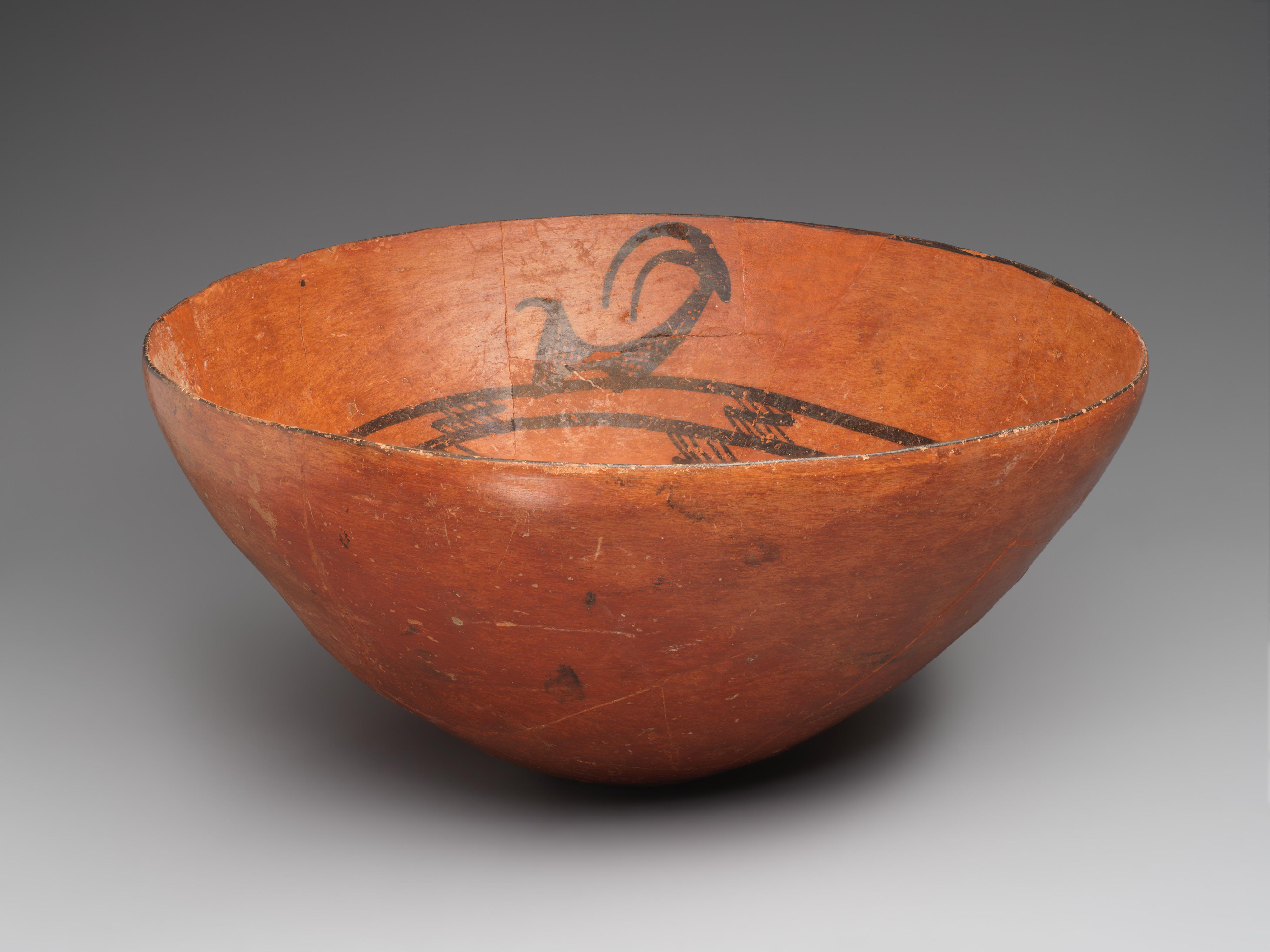Bowl decorated with horned animals
Not on view
Like much of the pottery from Iran in the Chalcolithic Period (ca. 5500-3000 B.C.), this piece is very skillfully made, with thin walls of very uniform thickness. Parallels with similar pottery excavated at the site of Tepe Sialk near Kashan allow it to be dated to 5000-4000 B.C. The bowl has been burnished to a glossy shine, a process in which a vessel that has dried to leather-like hardness is rubbed with a stone or bone tool in order to make the surface less permeable to liquids. This process may have been primarily functional, but the care and effort placed on the shaping and decoration of the bowl suggests that the aesthetic effects of the gleaming surface were also important. While the outside surface of the bowl is a uniform red color, the inside has been decorated with painted concentric circles connected by eight hatched zig-zag patterns arranged like the spokes of a wheel. Above the uppermost circle, four stylized ibexes with large horns are painted, their bodies indicated by outlines filled in by a crosshatched pattern, their heads facing in a clockwise direction and tilted slightly forward, as if in motion. The combination of the animals and the swirling pattern below them gives the impression of quick, spiraling movement, with the vertical zig-zag lines seeming to represent the flashing legs of the ibex in flight from a pursuer. As the bowl was decorated on the inside, it was probably meant to be seen primarily from above, perhaps as the person drinking from the bowl gradually emptied its contents, slowly revealing the design.
Due to rights restrictions, this image cannot be enlarged, viewed at full screen, or downloaded.
This artwork is meant to be viewed from right to left. Scroll left to view more.



